We started our three-week adventure in Barcelona and subsequently hopped a train to Basque Country (San Sebastian, Lekeitio, Elantxobe) where, after several days of exceptional eating (and a bit of drinking), we rented a car and undertook a leisurely drive along Spain’s verdant northern and western coasts. Along the way, we stopped in Cantabria (Santillaña del Mar, Comillas), Asturias (Cudillero, Luarca), and Galicia (Cariño, Pontedueme, Muxia, Canduas, Combarro, Combados, Ribeira Sacra, Ourense, Lugo, Santiago de Compostela) before catching a flight back to Barcelona.
Knowing where to eat when traveling is sometimes difficult. Guidebooks, such as Lonely Planet, tend to have good recommendations, though, owing to space constraints, the reviews are understandably brief and the number of restaurants profiled limited. Internet research yields a seemingly never-ending list of recommendations, but synthesizing it all can take time. Chatting with the locals is always helpful and typically results in good recommendations.
However, if you are traveling and only have a few days in each location, you really want to sample the best neighborhood spots, as well as those places off the beaten path, given that it may be a while before you are back in town. There needs to be some kind of travel guide devoted solely to restaurants and specialty food shops. Anybody know of one?
The following is a list of some of the restaurants and a few specialty food shops that stood out along my journey through Spain (in addition to my posts on pintxos and paella). If you ever find yourself in Spain, I hope you find this post helpful when deciding on a place to eat. If you have no plans to travel anytime soon, then I hope this inspires you to take a trip to Spain or somewhere else in the world and to explore its cuisine. As well, I hope you enjoy the photos, as Patrick patiently waited before digging in to each dish until I had snapped the [“perfect”] photo, though it was not difficult to snap a great shot, given that the food looked (and more importantly, tasted) so good!
Bar Mut, Barcelona
It’s not difficult to find great seafood in Espana. You can pull off the road just about anywhere and find a plate of navajas (razor clams), zamburiñas (scallops), pulpo (octopus), etc. (unlike in the States, where, typically, your only option is fast food or national chains, both of which are forgettable). However, if you are looking for a place that offers impeccable mariscos and a creative spin on traditional Spanish cookery, Bar Mut is a great destination. The place is rather small, seating only about 25, so make a reservation or get their early (doors open at 8:00 pm for dinner). We ordered the carpaccio huevos (eggs carpaccio with prawns), almejas (clams), nekros (small box crab), and the suquet de peix (fish stew).
Carpaccio huevos fritas
Nekros (small box crab)
Cal Pep, Barcelona
Cal Pep has odd dining hours, no menu, an artistic chef, and takes limited reservations. Get there early or be prepared to wait (and salivate) a while, at least an hour, before being seated. You line up against the wall, perhaps ordering a glass of wine or two as you soak in the atmosphere, and wait eagerly to snag a seat at the bar. Is it worth the wait? Cal Pep is a fun, lively dining experience. If you are looking for a place that takes in pride in the quality of their ingredients to create really good, traditional food, then Cal Pep is worth your time.
Setas (wild mushrooms), peppers, and prawns
La Paradeta El Born, Barcelona
El Bitxo, Barcelona
El Bixto is a very small, lively tapas/wine bar that specializes in cheese and charcuterie. It was also conveniently located around the corner from the hotel we were staying at, in the Born neighborhood of Barcelona. On a side note, it’s also right near the Palau de la Musica Catalan, where we were fortunate to see Opera y Flamenco.
Anyway, getting back to the food, El Bitxo is not much larger than a studio apartment. In fact it doesn’t even have a true kitchen. We popped in after the performance for a glass of wine, coffee-marinated salmon (really good), and a salad (with smoked salmon, candied walnuts, caramelized onions, sprouts, cheese, tomatoes). Ended up being a perfect midnight snack.
There are not printed menus, rather the entire menu is posted on the wall.
Cacao Sampaka, Barcelona
If you are looking for a ridiculously thick, dark, and creamy mug of hot chocolate, look no further than Cacao Sampaka. In addition to spicy hot chocolate, they stock a wide variety of chocolate.
It’s so thick you have to eat it with a spoon.
Casa Gispert, Barcelona
Just about the cutest specialty food shop I’ve ever been to, with a great selection of nuts, dried fruit, olive oil, vinegar, coffee, chocolate, jams, preserves, etc.
They’ve been roasting nuts in their wood-fire oven since 1851.
Lekeitio, Basque Country, North Coast of Spain
On the first leg of our drive, after leaving San Sebastian (refer to post: Pintxos Crawl, for memorable meals in San Sebastian) we followed the coastal road as we headed west. Driving through Basque country, we made a stop for a leisurely lunch in the coastal fishing village of Lekeitio.
A simple meal of grilled octopus, grilled squid, and a bottle of rose coupled with a magnificent view was a relaxing way to spend an afternoon before hitting the road and heading towards Cantabria. I wish everyday could be like that.
Elantxobe:
Another cute, little fishing village we passed along the way.
Welcome to Ireland, I mean Cantabria
So incredibly green.
Happy Grass-Fed Cantabrian Cow
Santillana del Mar
Santiallana del Mar is a picturesque town in Cantabria. Its cobbled streets and stone buildings make you feel as though you’ve stepped back in time. There is an old saying that Santillana del Mar is the Town of Three Lies, since it is not holy (santi), flat (llana), nor on the sea (del mar), as implied by the town’s name. Lies or not, Santillana del Mar is worth a day or two of your time.
Cocido montañes, a typical Cantabrian stew of white beans with black pudding, sausage, and pork, was a nice break from all the wonderful seafood we had been eating. To accompany this dish, we ordered caracholes de montañes (mountain snails) and a bottle of rioja.
Caracholes de Montañes
Cocido Montañes
Welcome to Asturias
Cudillero, Austurias
El Remo, Cudillero
Galicia
Playa Nemina, Muxia
Casa Saburil, Muxia
Mar de Ardora, Canduas
Combarro
El Caracol, Combarro
Meson de Alberto, Lugo
More grelos
Santiago de Compostela
We made a quick stop at O Gato Negro, another tiny, crowded bar for a plate of percebes (goose barnacles).
O Celmedo Caracol, Santiago de Compostela
Traditionally, octopus in Galicia is served boiled and sprinkled with paprika, rock salt, and olive oil (referred to as Pulpo a la Gallego). While Pulpo a la Gallego is quite tasty, nothing beats octopus a la plancha (grilled). This particular presentation at O Celmedo was served a la plancha and was delicious, very tender on the inside and slightly crispy and caramelized on the outside, drizzled with a bit of balsamic vinegar. Of course, it would not be a meal without a plate of pimientos de Padron, a staple in Spain.
Abastos 2.0, Santiago de Compostela
Abastos 2.0, located right outside the farmers’ market, has a small menu that changes daily. We tried just about everything on the menu that day. I especially enjoyed the xurel “After Eight” — bluefish sashimi marinated in soy and olive for 8 hours, the polbo grella (grilled octopus), and the berberchos with wakame (clams and seaweed).
There is no shortage of empanadas to be found in Spain. However, you can find a stellar variety of empanadas at the Santiago farmer’s market (along with an incredible selection of seafood, cheese, poultry, meat, produce, etc.). One particular stand, run by a family of bakers, sells a unique assortment of empanadas (along with many other baked goods and breads ) — bacaloa (salt cod), pulpo (octopus), berberechos (clams), zamburinas (scallops) — along with the more traditional varieties — bonito/atun (tuna), pollo (chicken), carne (meat) — great for breakfast or an afternoon snack.
You’ll also find big copper pots filled with octopus boiling away…
“Do not follow where the path may lead. Go instead where there is no path and leave a trail” — Ralph Waldo Emerson
Happy travels!
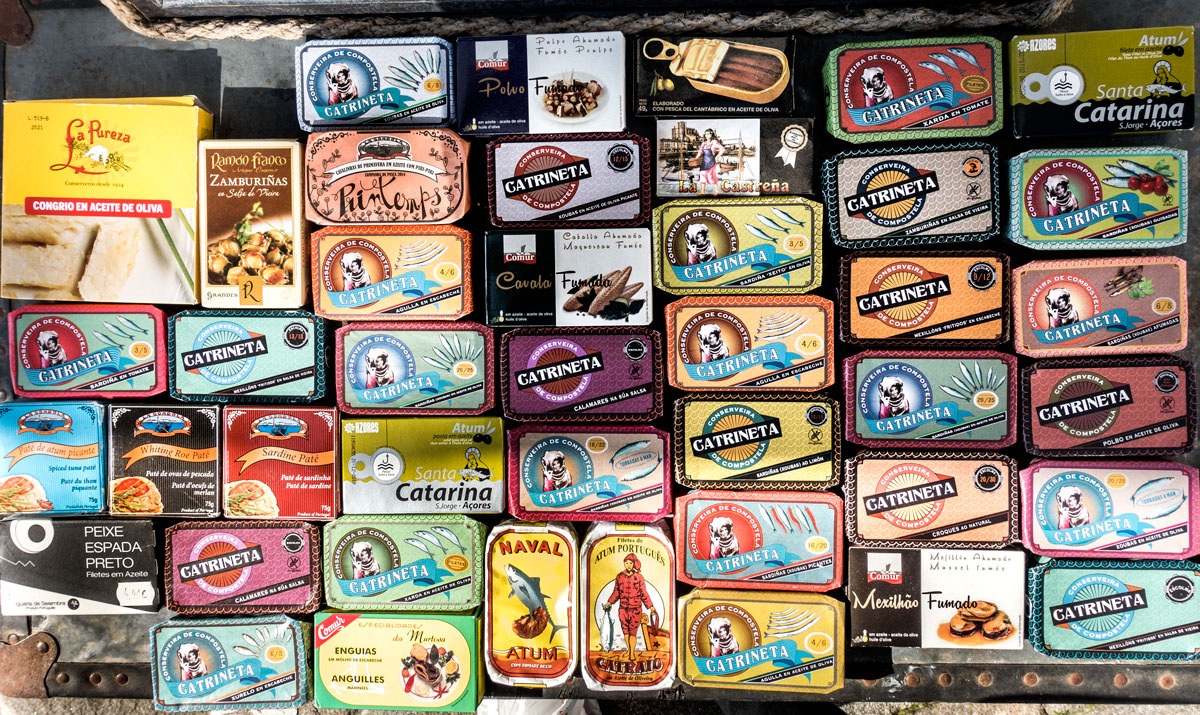


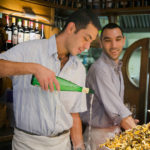
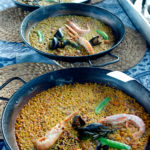
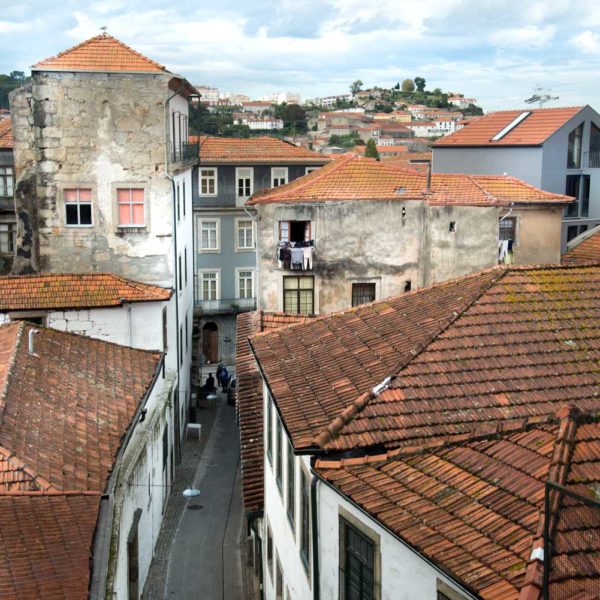
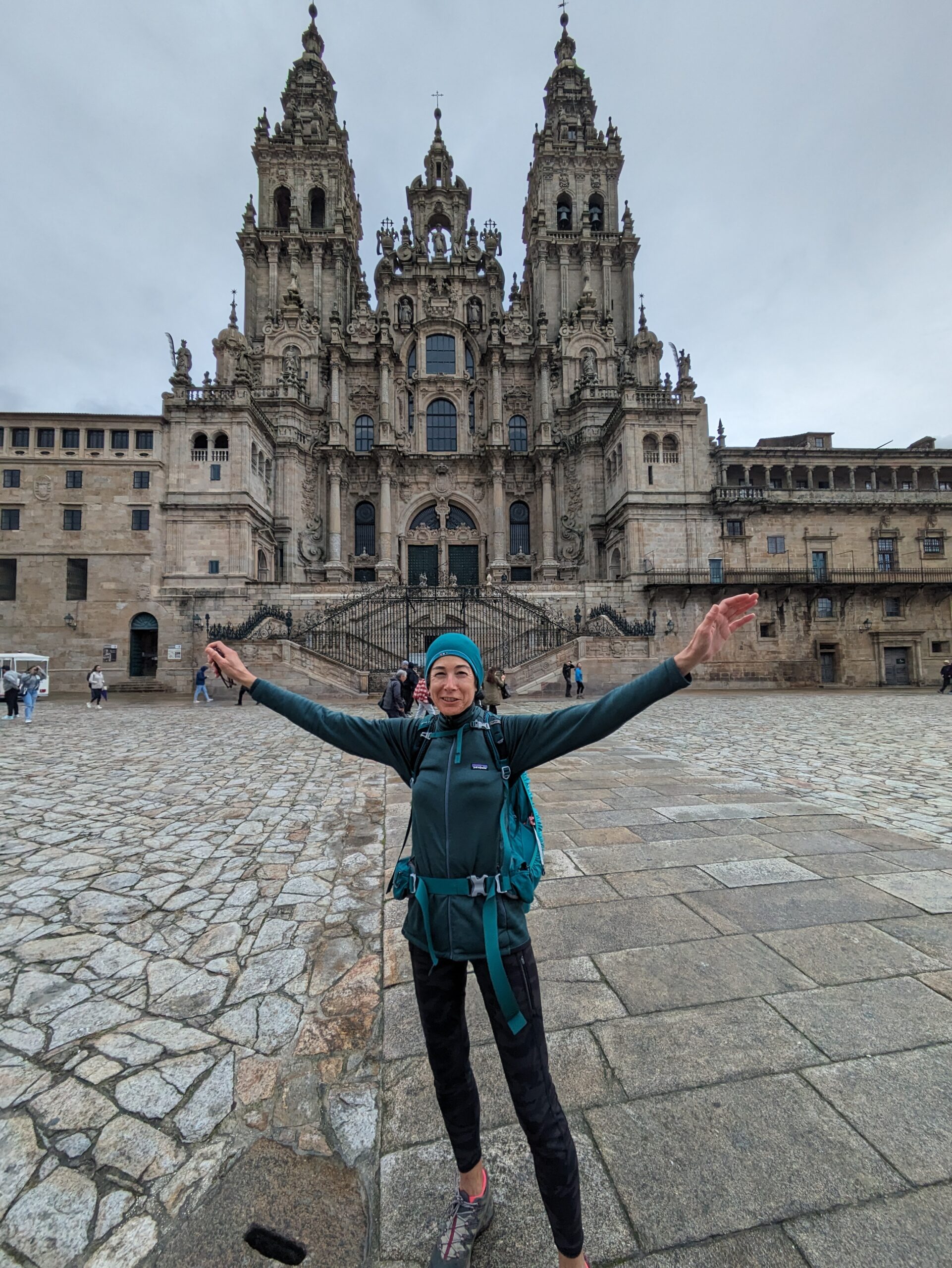
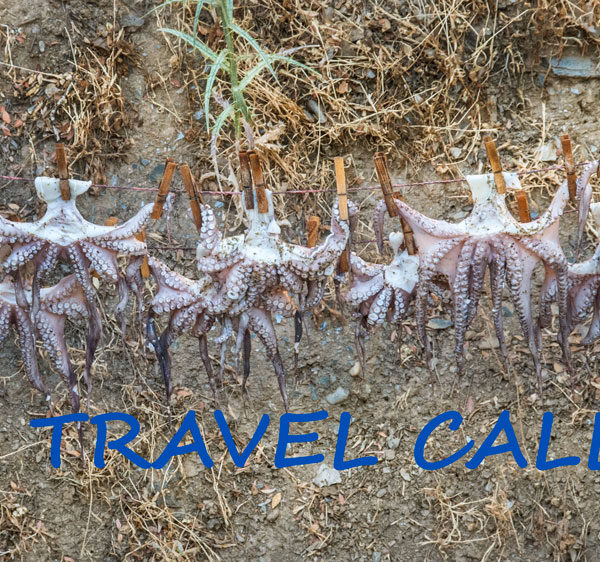


3 comments
Anonymous
What a fantastic post!
It brings back fond memories of my camino journey last year:)
Wild Greens and Sardines
Wow, that must have been an amazing journey. It's on my wish list of things to do. Would love to hear more about your experience.